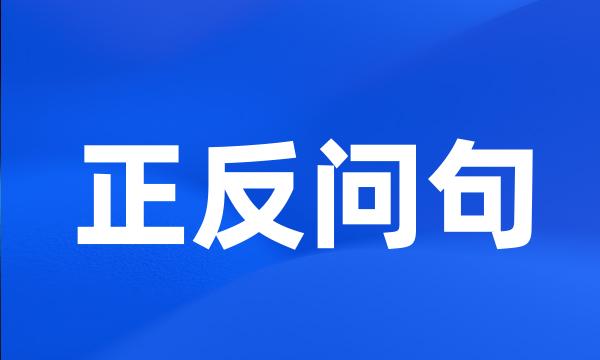正反问句
- A-not-A question;yes-no interrogative;V-not-V question
 正反问句
正反问句-
A不AB谓语句与正反问句的比较研究
A comparative research into the Chinese sentence pattern A or AB
-
昆明方言的格VP问句是东南亚4种类型正反问句中的一种典型。
The interrogative sentence " Ge VP " is the most distinctive syntactic phenomenon which stands for the one of four types among the southeast languages .
-
文章针对流行于新闻、影视媒体及校园言语中的A不AB谓语句用于正反问句的现象提出质疑,并从语言三个平面找出它与传统正反问句的区别。
In this article , the author queries the Chinese sentence pattern A or AB , a frequent expression in news , film media and school campuses and presents its difference from Chinese traditional negative and positive sentence patterns in three grammatical aspects ( syntax , semantics and grammar ) .
-
山阴话中的正反问句主要是VP-(PRT)-NEG格式,另外还有少量V-neg-V式。
The main sentence pattern of the positive and negative question sentence in Shanyin local dialect is " VP - ( PRT ) - NEG ", there are also some " V-neg-V " pattern .
-
韩汉语正反问句对比
A Contrastive Study of Korean and Chinese Yes-No Question
-
用于正反问句末尾的没、没有与语气词么也有一定的关系。
The mood word " Me " also has some relation with the negative " Mei " and " Meiyou " .
-
汉语称谓的动态研究近百年来北京话正反问句动态研究
The Dynamic Study of Chinese Address Forms The Dynamic Study of the Positive-and-Negative Questions in Beijing Dialect in the Last Hundred Years
-
正反问句是现代汉语疑问句的一个重要类型,前人已有大量优秀的研究成果。但从目前的情况来看,这些研究成果还很少能为计算机所用。
Positive-negative questions , as a very important category in interrogative sentences in modern Chinese , former scholars have achieved massive outstanding achievements on it , however , few of them can be employed by computer .
-
这八个主要类型的问题有特殊疑问句,陈述疑问句,正向是非问句,反向是非问句,含有情态词的是非问句,正反问句,附加疑问句,选择疑问句。
The eight major types of questions are : wh-question , declarative question , positive yes-no question , negative yes-no question , yes-no question with modal auxiliaries , X not X question , tag question , and alternative question .
-
韩汉语选择问句对比同时识别和理解的查询语言覆盖面从过去人们只研究祈使句和特殊疑问句扩展到是非问句、选择问句和正反问句等句型。
A Contrast of Selective Question Sentence between Chinese and Korean Language In the past , people only studied the imperative sentence and special question , now the yes-or-no questions and the positive and negative questions are also studied .
-
韩国语一定要由核心动词的肯定否定叠加形式组成正反问句,而述补结构、述宾结构充当谓语的时候,汉语可以用补语或宾语的肯定否定叠加形式组成正反问句。
Korean yes-no question is bound to consist of the reduplication of assertive and negative forms of key verbs , while in Chinese , as verb-complement structure or verb-object structure is used as predicates , the reduplication of assertive and negative forms of complement or object can constitute yes-no question .
-
正反问反问句是一类较特殊的反问句,形式上虽然与正反问询问句相似,却不需要听话人回答而能表示出肯定或否定的倾向。
A or-A rhetorical questions have two kinds : one is to negate its front item , the other is to negate its back item .
-
选择问形式、正反问形式的反问句虽然数量不多,但体现了反问句结构类型的多样化。
Though the number of the alternative question and the positive-negative question is not large , it reflects the diversification of the structure forms of rhetorical question .
